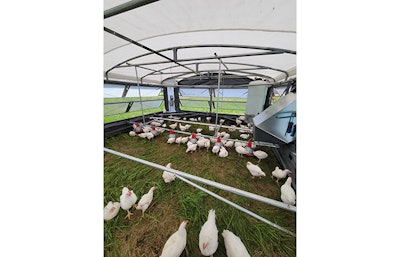
Robotic house technology could reduce the amount of labor needed for pasture-raised poultry production.
“The thing about any pastured operation right now is that it’s super labor-intensive,” Daniel Badio, CEO and founder, Ukkö Robotics, said. “This technology is designed to allow the smaller farms to take advantage of the higher-value market for pasture-raised eggs and, at the same time, improve the health of their soil and the value of their land.”
Pasture-raised poultry is popular with consumers; however, the management style poses several health and welfare challenges, including losses to predators, poor growth performance, increased mortality and a general lack of control of the birds’ environment.
An automated fully enclosed moveable coop
Robotic technology could help pasture-raised poultry producers solve these issues, namely through the development of an automated fully enclosed moveable coop. An automated coop could contain self-feeders, waterers and ventilation control.
In addition, the robot moves the coop between six and 30 feet every day, which helps prevent overgrazing and can provide the birds with the opportunity to graze on fresh grass and insects.
“This can automate the grazing of a defined area based on the conditions of the grass and the soil,” Badio explained. “Now they can have fresh area to graze.”
Sensor technology ensures that the coop recognizes when it has reached the end of a field, automatically turning the housing to a fresh section, and can also monitor animal drinking and eating activity. Electric fencing can protect the poultry from predators.
It can also result in significant labor savings. Badio estimates that producers will need to spend less than 15 minutes filling feed and water a week for the automated coop.
The automated coop can house up to 526 broilers, 385 layers or 217 turkeys and features solar charging, with a battery life of up to five days.
Like what you just read? Sign up now for free to receive the Poultry Future Newsletter
















